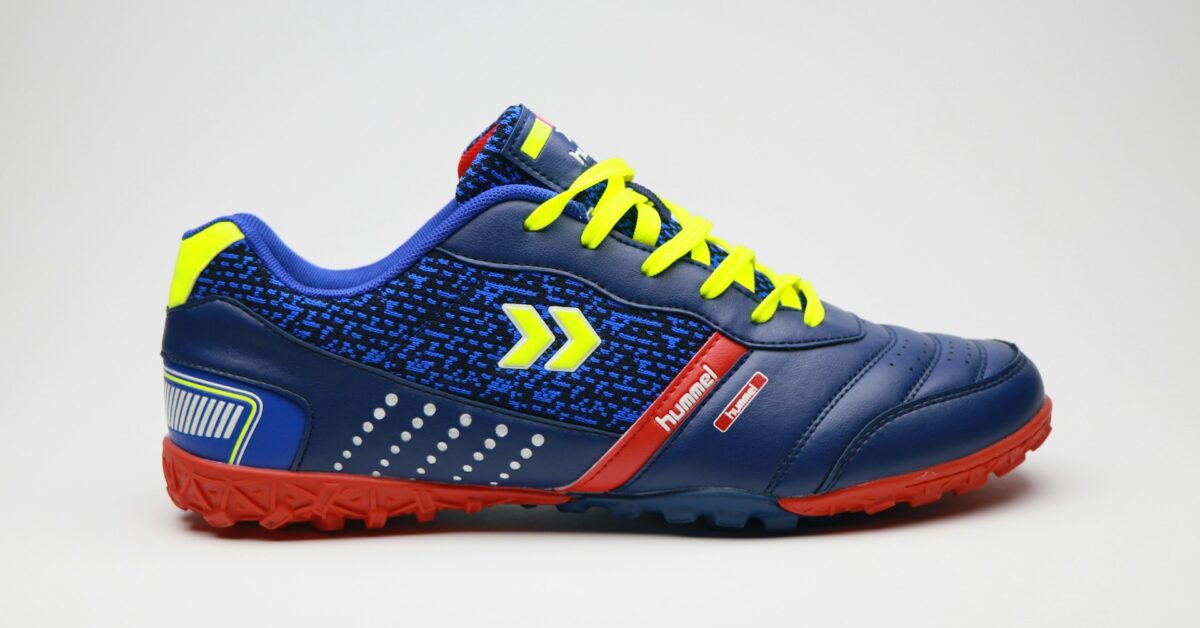Soccer is a fast-paced game that requires players to be agile and fleet-footed. The right pair of indoor shoes can make the difference between winning and losing.
From lightweight designs to grippy soles, every player has various options. But which one is the best for you?
Comfort
Whether you’re looking for a pair of shoes to wear at the park or an indoor soccer shoe, you’ll want to find something comfortable. Indoor soccer shoes are usually designed with a snug fit that follows the shape of your foot.
They also have a gap in the toe box that allows your toes to spread out and grip the shoe. It’s essential to ensure your shoe fits tightly from heel to ankle but is not crushingly tight, as this will cause your feet to cramp and become sore during matches.
You’ll also need to find a pair of lightweight indoor soccer shoes. This is because fast-paced games in an indoor stadium can result in your feet getting hot and sweaty, and you’ll want to avoid any slippage while changing direction.
Many indoor soccer shoes use a mix of natural and synthetic leather to keep the shoe sturdy, but they’re still lighter than most outdoor cleats because they don’t need as much rubber sole material. It’s also common for these shoes to have a lot of ventilation and breathable mesh in key areas, which helps keep your feet cooler and more comfortable during the game.
The Puma King IT is an affordable, lightweight, and breathable indoor soccer shoe perfect for players who play on the field all day. They feature a classic look that’s been modernized in some ways, and they have good arch support and rigid sidewalls to prevent them from becoming too soft during long games.
Durability
Soccer players need to wear the right shoes to get the best performance. Indoor soccer is played on carpeted surfaces, so close-fitting, lightweight, flat shoes are necessary. The shoes must also have a gum rubber sole with shallow-patterned grooves for added traction.
The shoe manufacturer makes these patterns so that the foot has maximum contact with the ground. Shoes without enough traction can cause players to slip and lose control, so the design of these shoes is essential.
Different players will require other things from their shoes. Attackers prefer shoes with a good strike zone to help them control the ball better, while defensive players need more traction and protection. Goalkeepers are in the position to take the most hits so they will need extra traction and support for their feet.
The quality of the materials used is also essential for the durability of indoor soccer shoes. Generally, natural leather is a lot more durable than synthetics. However, keeping the boots in optimal condition requires more maintenance. Synthetics can be a good option for people who are on a budget or don’t want to care for shoes as much.
Eventually, all shoes will start to show signs of wear and tear. If your indoor soccer shoes start to slip more than usual, it’s usually a sign that the tread is wearing down. If this is the case, replacing your shoes before they get worn out completely is best.
Traction
Traction is one of the most important aspects when purchasing indoor soccer shoes. The proper shoe traction will help you avoid injuries like muscle strains or slips and falls. Choosing the right pair of indoor shoes will also provide better balance and stability on the court.
When selecting an indoor soccer shoe, try it on and ensure it fits snugly around your foot but does not squeeze or rub painfully. Also, allow a little “wiggle room” in the toe area to avoid blisters and pain.
Most indoor soccer shoes feature non-marking rubber soles designed explicitly for the court surface. Unlike outdoor soccer cleats with long studs for increased traction on grass surfaces, indoor soccer shoes are designed with a flat gum rubber sole that will give you an excellent grip on turf and hardwood courts.
Choosing the right indoor soccer shoes for your specific playing surface and position can be difficult. Some players may prefer the feel of natural leather, while others will prefer synthetic materials. Genuine leather is softer and will conform to your feet over time, but it requires more break-in time than synthetic shoes.
You can speed up stretching out your shoes by soaking them in hot water and stuffing them with rolled newspapers before leaving them to dry. Keeping your shoes clean after each game will increase their traction and extend their life.
Style
The best soccer shoes are made with durable materials that fit your feet. It’s no good to get a pair of light and flashy shoes that don’t fit well, or you could have problems playing soccer. The first thing to look for is if the boots hurt when you put them on or walk around, which could indicate they are not the right size for your foot.
Soccer is a fast-paced sport that requires agile players to wear the proper footwear. Regular shoes can eat up astroturf and leave marks on hardwood floors, so most indoor fields require specialized footwear for players to avoid injury and protect the floor surfaces.
Close-fitting, lightweight shoes with a flat gum rubber sole are the most suitable for indoor soccer. They should not have studs or other metal parts, and they should be designed to provide traction on synthetic turf and hard indoor court surfaces like those found in basketball courts and gyms.
Attacking players tend to favor lighter shoes, giving them more agility and a larger strike area. At the same time, defenders and goalkeepers prefer shoes with more protection and durability to resist contact with opponents. All players need good lateral support and traction while moving forward and backward to control the ball.


